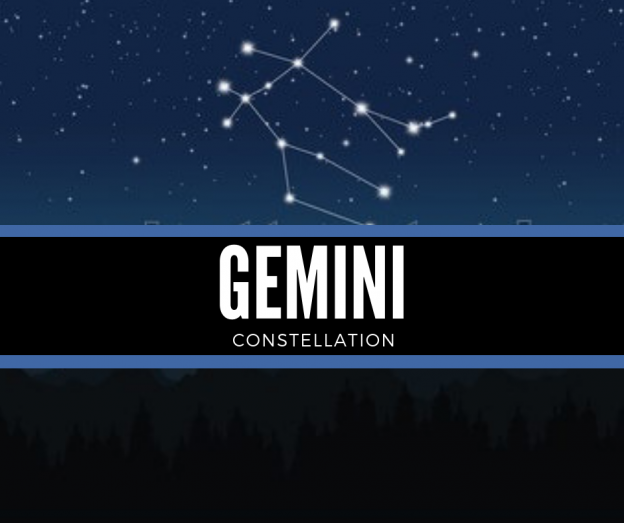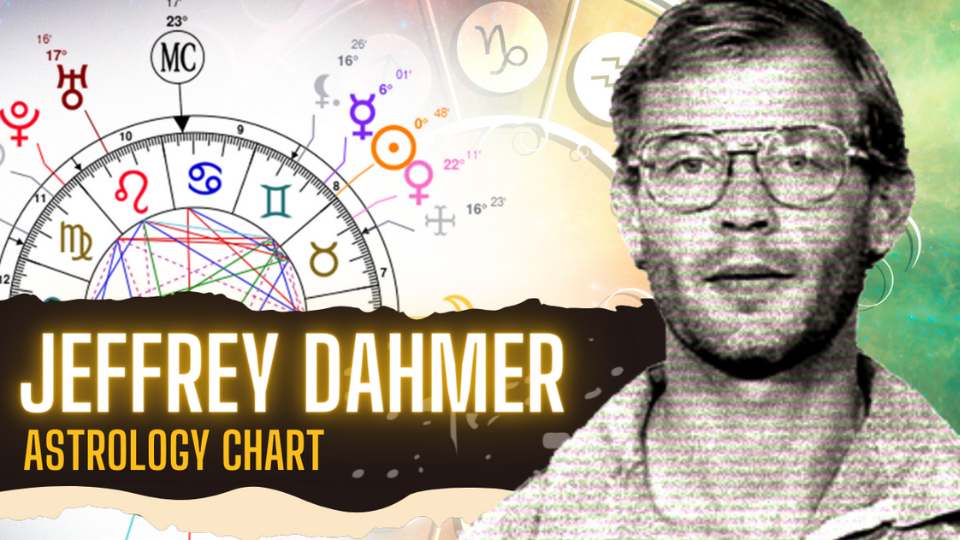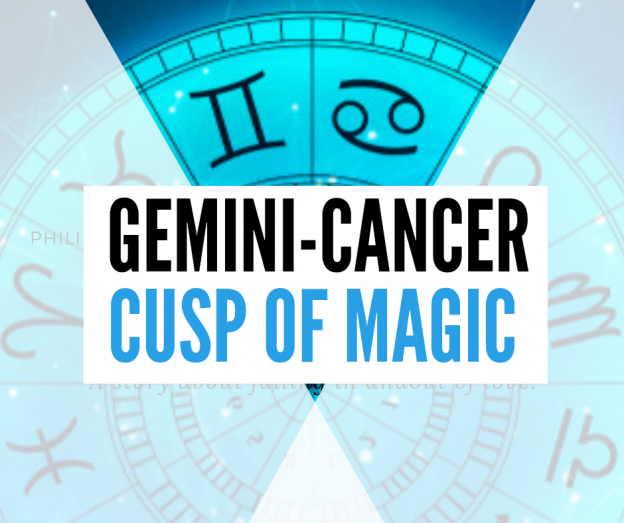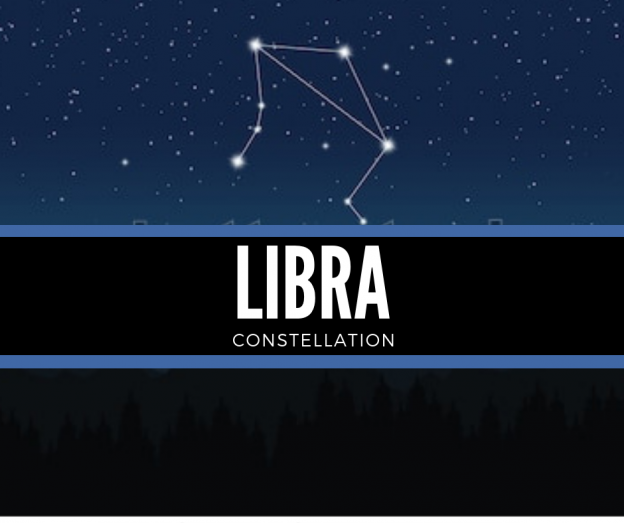Looking up at the sky on a clear night gives a first-row glimpse at the magic of the celestial sphere. However, for the attentive eye, a particular set of stars is bound to catch even the most inexpert amateur astronaut.
Right above, an impeccably identical duplex of stars shines on, almost seamless similar to one another—eye-catching and impressive in their symmetry amidst imperfections.
They are the faces of the Heavenly Twins—Gemini.
Constellations are considered nothing more than simple imaginary shapes brought to metaphorical life by connecting stars together. However, some of them grow to be even bigger than that—they become part of humanity’s culture, a patrimony to preserve and protect.
Gemini, as part of the zodiacal constellations, has an important spot both in the skies and in our beliefs.
ABOUT THE GEMINI CONSTELLATION.
Gemini—meaning twins in Latin—has a name that perfectly matches its imagery of identical twins paralleling one another. A mid-sized constellation, it is the 30th largest out of the 88 official ones, occupying a 1.2% of the celestial sphere. However, its size doesn’t stop it from being one of the brightest and easiest constellations to spot with the naked eye.
Classified as a Northern constellation, Gemini is most visible through winter and until spring in the North Hemisphere, while in the South is through summer to mid-autumn. Experts agree, however, that it is most beautiful and visible through the month of February, and by May it can be seen right after the sunset in the west.
The constellation of Gemini is one of the distinguished members of the “zodiac”—twelve (now thirteen) constellations that circle the celestial sphere and mark the apparent trajectory of the sun through the sky. This privileged position has turned it into a constellation of high interest for astrology enthusiasts.
Locating it is fairly easy. In technical terms, Gemini is visible at any latitude between +90° and -60° at any time of the year except late spring and early summer—or late autumn and early winter in the southern hemisphere.
Because of this zodiacal nature, Gemini is located right between two fellows—Cancer to the east, and Taurus to the west. On the north, it borders Auriga and Lynx while Canis Minor and Monoceros lie on its south.
Casual admirers of the sky can find Gemini by following Orion’s belt and locating that constellation’s brightest stars, Betelgeuse and Rigel. Following that direction leads straight to the Heavenly Twins.
MAJOR STARS IN THE GEMINI CONSTELLATION.
While Gemini is composed of multiple stars visible to the naked eye, most of them are dim enough not to be considered eye-catching for most stargazers. However, two stars stand out above the rest.
Pollux
Pollux is one-half of the two iconic stars mentioned earlier—the most visible faces of Gemini. Also named Beta Geminorum, Pollux is the brightest star in the constellation, shining just a bit more than its twin.
Boasting of a beautiful golden-red hue, Pollux is the 17th brightest star in the sky, no small feat by any means—it shines 32 times more than our sun, is twice as big, and it’s located at 33.78 light-years from Earth.
Impressively, in 2006 Pollux was confirmed to have an orbiting planet, with an orbiting period of 590 years. As far as exoplanets go, Pollux B is one of the nearest to our solar system.
This star is named after Pollux, one of the famed Dioscuri brothers in Greek mythology, whose story will be expanded on further on.
Castor
Also designated as Alpha Geminorum, Castor is the second of the famed twin stars of Gemini—only this isn’t exactly true.
Castor is not a twin, but a sextuple star system—meaning it is composed of six stars, all of them organized in binary pairs, almost as if they were twins themselves. Two of them are bigger and brighter than the sun, while the remaining four are dwarf stars that are rather difficult to spot.
Together they give out a blue hue and make one of the brightest stars in the sky, ranking 25th and only a few spots bellow Pollux. They are 52 light-years away from Earth.
Etymologically, its name comes from the mythological Castor, the other half of the Dioscuri heroes.
GEMINI CONSTELLATION FACTS.
Gemini is rich in history, brightness, popularity, and deep space objects. This makes it one of the absolute favorites for casuals, enthusiasts and astronomers alike.
Below is a list of only a few of Gemini’s most important facts and trivia.
- The Gemini constellation hosts Geminga, an isolated neutron star. Neutron stars are compact and dense stars composed mostly of neutrons—the final form of a massive star after its core collapses. Geminga is a pulsar, a pulsating and rotating variant of neutron stars.
- The Heavenly Twins also have an open star cluster—Messier 35, or M35. It is almost 4,000 light-years away from Earth, but it is visible near the feet of the Gemini constellation. Experts estimate the cluster might be over 100 million years old.
- Two beautiful nebula—Eskimo and Medusa—are located within Gemini’s area of the sky, but they require telescopes to be enjoyed.
- Once a year, during the first half of December, Gemini hosts a striking meteor shower—the Geminids. Appearing in pale yellow, the spectacle can be witnessed in both hemispheres, though at different times. Less popular yet still important is the Epsilon Geminids, taking place in October.
- Being a zodiacal constellation, the sun apparently goes through Gemini once a year, from June 22 to July 21.
- As a zodiacal constellation, Gemini is highly important for astrology, as it is considered one of the twelve signs that guide the actions and behavior of humans on Earth. It is considered a person has Gemini as a sun sign if born between May 21 and June 21—a date that does not match with current astronomical cycles.
GEMINI CONSTELLATION MYTH AND HISTORY.
Gemini is one of the 48 constellations that were first described and listed by Ptolemy in his Almagest, later becoming one of the official 88 constellations listed by the International Astronomical Union.
The constellation represents, as mentioned before, the famed Greek heroes and twin brothers Castor and Pollux, namesakes of the two brightest stars.
According to Greek Mythology, both brothers were the sons of Leda, Queen of Sparta. However, despite being twins they had different fathers—Castor was the son of King Tyndareus, therefore mortal, while Pollux was the immortal son of Zeus, who had approached Leda in the guise of a swan.
During a fight with their cousins, Castor was fatally wounded. Zeus approached his son Pollux and gave him two choices: he was to live in Olympus forever, or he could give half his immortality to his dying brother—Pollux quickly chose the latter.
From then on, Castor and Pollux alternated between life and death—Olympus and Hades—and eventually turned into the immortal constellation Gemini.
Other cultures have also visualized in the two stars as inseparable twins—the Chinese saw them as representations of “Ying” and “Yang”, while the Babylonians conceptualized them as the Great Twins.
In astrology, Gemini is recognized as the third zodiac sign—a mutable air sign, ruled by Mercury. Those born with Gemini as their sun sign are witty, curious people with a knack for intellectuality and a gentle disposition, yet highly moody, inconsistent and indecisive.
With a theme of duality in both astronomy and astrology, the only certain thing about Gemini is that its beauty will keep shining above Earth many thousands of years from now on—together.
related posts:
SOURCES:
Dioscuri at Encyclopaedia Britannica.
Gemini Constellation: Facts About the Twins by Kim Ann Zimmermann at Space.com.
Gemini? Here’s your constellation by Bruce McClure at EarthSky.
Gemini Zodiac Profile at Horoscope.com.
Geminga at Encyclopaedia Britannica.
Pollux: The brighter Twin star by Larry Sessions at EarthSky.
Castor: The Sextuplet Set of Stars by Elizabeth Howell at Space.com.
Want to know your astrology placements? You can generate your astrology chart here with our free birth chart generator tool.
- ESTP and ESFP in love: 6 Dynamics of Their Relationship - September 4, 2024
- ISFP and ISTP in love: 5 Dynamics of their Relationship. - August 28, 2024
- ISFJ and ISTJ in love: 5 Essential Dynamics of their Relationship - February 24, 2024





